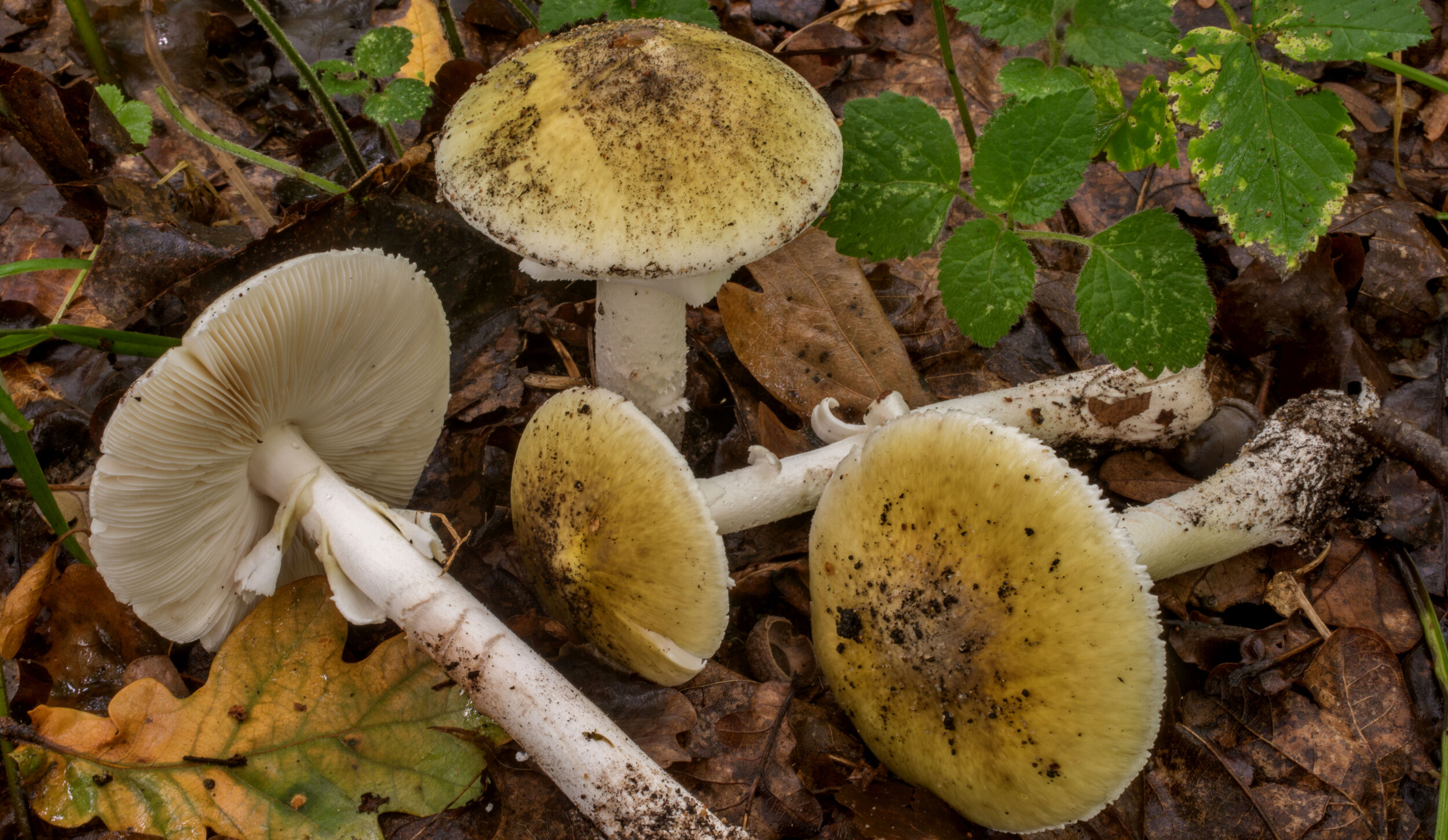
Amanita phalloides
DEATH CAP
Order: Agaricales, family Amanitaceae
CAP GREENISH, SMOOTH
Cap: 4-16 cm broad, yellowish-green to greenish-brown, darker at center.smooth, at first oval, then convex to plane, margin not radially lined, usually no patches on the surface (remnants of universal veil), but there can be some
GILLS FREE, WHITE
STALK WHITE WITH SKIRTLIKE RING, VOLVA (SACLIKE CUP) ON ENLARGED BASE
Stalk: 5-18 cm long, 1-3 cm wide, white ring around stem when mature which may disappear with age; club-shaped base, with a volva (cup) at the base. The volva is white, membranous, sacklike, separable from the stem and is OFTEN BURIED UNDERGROUND.
SPORE PRINT WHITE
Spores: 8-13 x 7-9 µ, broadly elliptical to nearly round, smooth, thinwalled, amyloid
Amanita phalloides⚠️ ☠️ DEADLY POISONOUS
FOUND ON GROUND WITH HARDWOODS AND CONIFERS, OFTEN IN URBAN AREAS
Common along the east and west coasts, spreading widely
LOOKALIKES
Pure white, taller, more slender
⚠️ ☠️ DEADLY POISONOUS
Known in the east as Amanita citrina and Amanita brunnescens
YOU MIGHT ALSO LIKE TO KNOW...
Amanita pantherina has the classic features of deadly Amanitas - a volva (sack) at the base of the stem, a skirt-like ring around the stem, free white gills, and white spores. Be careful though, since the ring can disappear and the volva is buried underground and can disintegrate. The cap color can be variable. In age there is a pungent odor. Sometimes this is the most plentiful mushroom in the San Francisco Bay area. Symptoms are delayed for 10-14 or more hours, and then there is severe vomiting diarrhea and cramps. There is a remission, and then serious liver and kidney problems show up. It can cause death in 5-10 days.



